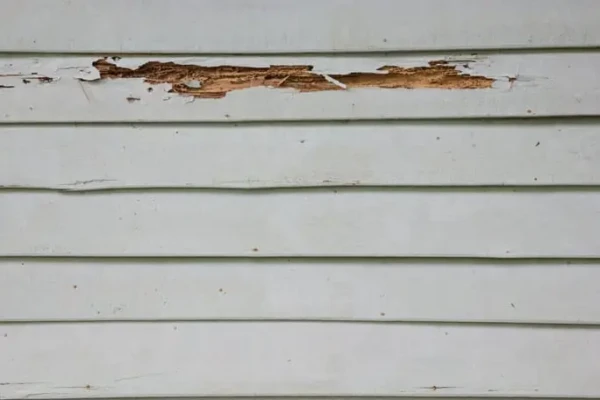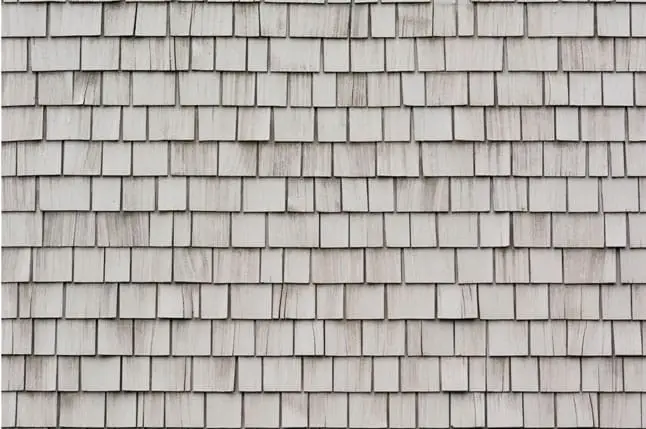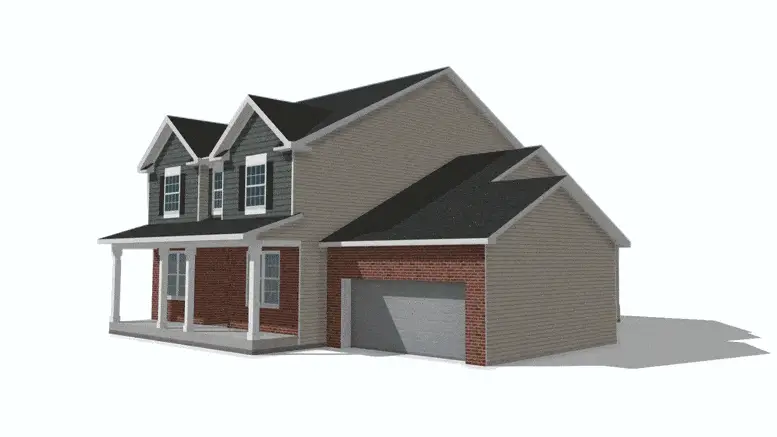Table of Contents

There’s nearly no other season that homeowners play such a large emphasis on curb appeal than springtime. It’s not a surprise that your exterior siding comes in relation to curb appeal, and vinyl siding happens to be one of the most popular options in New England. That’s why it’s important to think about the process of maintaining vinyl siding in the spring–but luckily, there isn’t too much to maintain!
When it comes to vinyl siding maintenance, you’ll be happy to hear that there is not a lot involved. Here are some tips to make sure your siding is in good shape for Spring. Keep in mind that premium spring siding materials will make a difference in your home’s performance throughout the year!
Check for Signs of Moisture Damage
This is one of the more ominous issues when it comes to your home exterior.

Moisture damage will directly impact the siding performance. However, vinyl siding is a non-porous and sustainable siding material. This means that water will not penetrate the exterior and cause problems like rot. That’s why you need durable siding for spring weather–and vinyl is a top choice for New England homeowners!
Common Signs of Moisture Damage in the Spring Season
With wood siding, it’s a different story. You may see holes in your siding too. You will need to look for signs such as:
-Chunks of the exterior have crumbled away.
-The wood is soft and the screwdriver sinks into it the last time when you push it into the wood.
-There is mold, mildew or algae growth present.
-The siding is dry rotting.
-There are bubbles in your siding.
-The siding seams are popped out of place.
Since wood is an organic material, this makes it is a good source of food for insects. The bad news is that it can ultimately end up destroying wood siding. This is why many homeowners choose to switch from all wood siding to new vinyl.
The better news is that there are plenty of options for vinyl siding that looks like wood, all without the worry of moisture damage and wood rot.
Look Out for Termite and Insect Damage
When it comes to replacing siding on a house in the spring, you’re doing yourself a favor by deterring insects. Our vinyl siding is treated to repel insects, even termites!

According to Progressive Foam, “Termites destroy wood in foundations, walls, and roofs of houses, and the damage they leave behind can be an expensive and difficult task. Most people don’t realize termites are causing damage until it’s too late to stop them. That’s why we add a termite inhibitor to our insulating foam—for protection and prevention.
- Termites will tunnel through ordinary foam insulation for shelter.
- Insects easily access the wooden parts of your home’s structure by hiding undetected behind the siding.
- The tunnels that termites leave behind damage the insulating value of the foam and compromise its strength of the foam.
All it takes for a termite infestation to begin is an entry point of 1/32”. If your old wood siding is filled with holes or loose panels, it’s inviting these pests to further destroy the exterior.
Meanwhile, termites need a warm and moist environment to thrive. Wet wood siding serves as a haven. However, if moisture is found behind the panels of old vinyl siding, an infestation can still begin. Remember that termites tend to gravitate to untreated wood siding.
Don’t forget that termites aren’t the only pests to worry about with wood siding! Carpenter ants are more than happy to make a home out of your wood siding as well.
Common Signs of Termite & Insect Damage on Wood Siding:
- Buckling wood
- Termite swarms
- Termite tunnels
- A strange smell in your home that is similar to mold or mildew
- Holes in the wood
- Swollen walls, floors, or ceiling
- Your wood siding looks like it has a hint of moisture damage
- You may find peeling paint or loose wallpaper in your home
Tip: Foamback siding does more than just save energy; it protects your home from insect damage.
Do Not Pressure Wash Your Vinyl Siding: Try This Instead
Many homeowners ask how to clean vinyl siding. What is the correct way to wash vinyl siding in the spring?There is one warning that we need to make clear: it’s a bad idea when it comes to pressure washing a house with vinyl siding!Over time, atmospheric dirt may stick to the siding. Cleaning vinyl siding is easy, and there are several ways to approach cleaning this exterior:
- Handwashing with a soft cloth and mild cleaning solution. Homeowners can make cleaning solutions by mixing mild dish soap with warm water.
- Another option is to create a 70/30 mixture of water and vinegar. This vinegar solution can also successfully remove mold and mildew. If the vinyl has a textured surface, use only a bristle brush to remove stains from the grooves.
Check the Siding for Cracks and Breaks
Cracks or breaks in the siding can cause water leaks in your home, especially during the rainy spring season, or if you wash the exterior with a garden hose.

Top Causes of Breaking and Cracking Siding:
-Old siding ages become moisture-damaged
-Then produces breaks or cracks
-Very heavy wind storms and downpours can also produce cracks
-Be careful with your lawnmower or rock buildups against your siding.
Tip: Don’t forget to look at your interior walls for damage. If your vinyl siding is cracked or broken, it can’t protect the exterior walls. This may result in interior wall damage, such as cracks.
Ensure Straight Panel Installation
Check to make sure that your vinyl siding is properly installed. This means that the panels are positioned straight on your exterior. If the siding panels are not properly installed, they won’t effectively protect your exterior from the elements.

Signs of Poor Quality Siding Installation:
- Loose or sagging panels that flap in the wind, or they are hanging off the exterior of your home
- Missing panels that are missing, which expose your home to the elements and may easily result in costly moisture damage
- Warped or wavy siding
- There is a gap between where the seam of your roof and the siding meets
If any of the above is discovered, you will need to have your siding either repaired or replaced. Allowing your exterior to be exposed to the elements will result in narrative problems.
Top-Rated Spring Siding Contractors: See Your Home in 3D for FREE with New Vinyl Siding

Ready to transform your curb appeal this spring? We’re standing by to give you a siding inspection and quote for new vinyl siding replacement! We’re the spring siding replacement experts who will improve the performance and beauty of your home. Custom spring siding designs are available!
Find quality vinyl siding that can withstand the damp and rainy weather of spring in New England. With a variety of colors to choose from and in-stock vinyl siding available, contact us now for a quote and learn about our affordable spring siding solutions.


